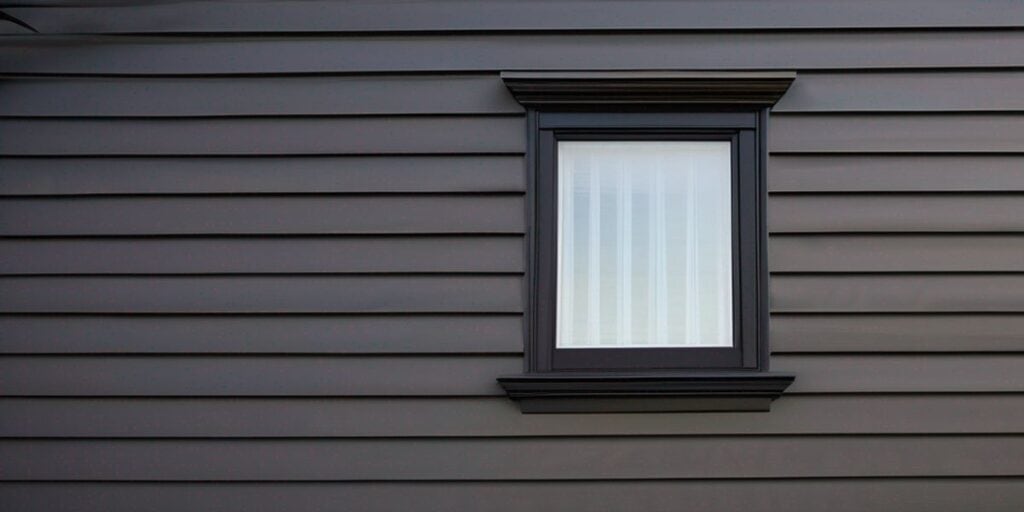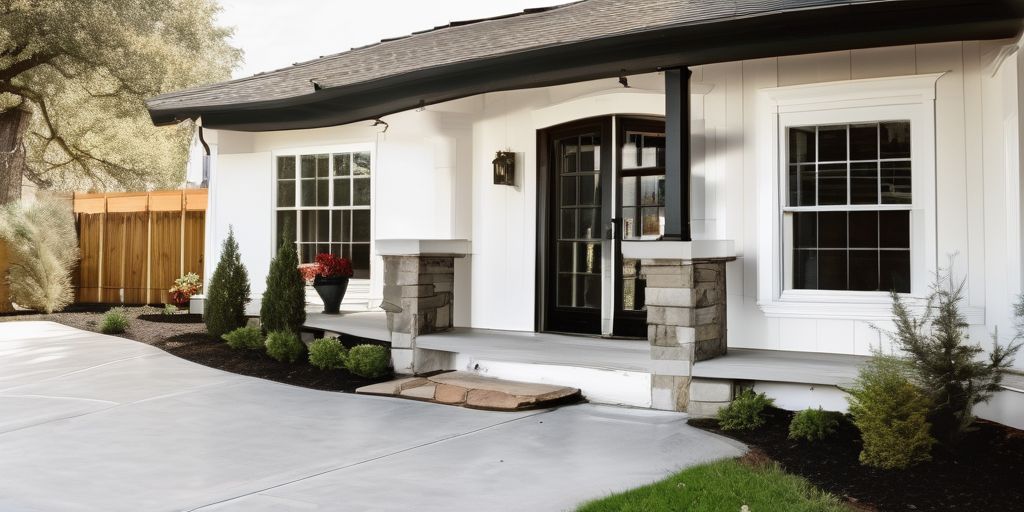Choosing the right paint for aluminum siding is essential for enhancing both the aesthetic appeal and the durability of your home’s exterior. This guide provides a thorough overview of the factors to consider when selecting paint and preparing for a painting project, ensuring that your aluminum siding looks great and withstands the test of time.
Key Takeaways
- Opt for 100% acrylic latex paint for its quick-drying properties and resilience against the elements.
- Avoid oil-based paints to prevent warping or buckling of the siding.
- Select a paint finish that aligns with your maintenance preferences; satin, semi-gloss, or high-gloss are recommended for durability and ease of cleaning.
- Consult with professionals to choose the best paint type, color, and finish for your specific needs.
- Ensure proper preparation of the siding, including cleaning and priming, to achieve the best results.
Understanding Aluminum Siding
Historical Context and Importance
Aluminum siding’s ascent to popularity was fueled by its heralded features: lightweight, rust-resistant, and requiring minimal upkeep. These qualities made it an attractive option for post-war America, as it sought economical yet durable materials for residential construction. Its ability to mimic the appearance of painted wood further solidified its place in the hearts and homes of many.
Benefits of Painting Aluminum Siding
Aluminum siding is renowned for its ability to withstand the elements, providing a durable and low-maintenance exterior for your home. However, there are situations where a fresh coat of paint can breathe new life into your property. Perhaps your siding has lost its original sheen, or you’re aiming to enhance your home’s curb appeal with a different color palette. Choosing the right paint, application techniques, and maintenance are key for painting aluminum siding. It enhances aesthetics, protection, and longevity, offering a cost-effective alternative to replacement.
Maintenance Tips
Despite its strengths, aluminum siding is not without its vulnerabilities. Over time, exposure to the sun’s ultraviolet rays can dull its color, leading to a faded appearance. The formation of chalkiness — a fine powder that coats the surface — indicates the breakdown of the siding’s protective coating. Peeling and flaking paint exacerbate these issues, detracting from the siding’s aesthetic appeal and protective capabilities. It’s this intersection of durability and cosmetic decline that prompts many to prepare aluminum siding for painting by cleaning surfaces thoroughly, choosing the right paint, sanding, and priming correctly for adhesion and durability. Safety gear and proper tools are essential.
What Paint to Use on Aluminum Siding
Why Choose 100% Acrylic Latex Paint
Choosing the right paint is crucial for the longevity and appearance of your aluminum siding. 100% acrylic latex paint is highly recommended due to its excellent adhesion, durability, and resistance to fading and cracking. This type of paint adheres well to aluminum surfaces, ensuring a long-lasting finish.
Avoiding Oil-Based Paints
It’s important to steer clear of oil-based paints when painting aluminum siding. These paints can cause the siding to warp or buckle due to their composition. Instead, opt for acrylic latex paints which provide a more reliable and stable finish without the risk of damaging your siding.
Selecting the Right Finish
The finish of your paint can greatly affect the appearance and maintenance of your painted siding. Choices typically include:
- Satin finish: Offers a slight gloss and is easy to clean.
- Semi-gloss: More reflective and also easy to maintain.
- High-gloss: Highly reflective and best for accentuating details but shows more imperfections.
Selecting the right finish will depend on your aesthetic preferences and the practical aspects of maintenance.
Choosing the Right Paint and Tools
Essential Tools for the Job
When painting aluminum siding, having the right tools is crucial for a professional finish. Here are some essential items you should have:
- High-quality brushes and rollers
- Sprayers for even application
- Ladders for reaching high areas
- Masking tape for clean edges
Investing in quality tools can make a significant difference in the outcome of your painting project.
Techniques for Effective Application
Effective application techniques are key to achieving a smooth and durable finish. Consider the following:
- Use a primer if your paint doesn’t include one
- Apply thin, even coats
- Allow sufficient drying time between coats
Consulting with Professionals
If you’re unsure about the best paint or tools for your project, consulting with professionals can provide valuable insights. They can offer advice on the best products and techniques for your specific situation.
Remember, preparation is key for painting aluminum siding. Use proper tools, clean, prime, and choose between roller or spray application for a professional finish.
Preparing Your Aluminum Siding for Painting
Cleaning and Priming
Proper preparation is key to a successful paint job. Start by thoroughly cleaning your aluminum siding to remove any dirt, grease, or old flaking paint. Use a mild detergent and a soft-bristle brush or opt for a pressure washer on a low setting. After cleaning, priming your siding is crucial, especially if you’ve repaired or sanded any areas. This step ensures a smooth and ready surface for painting.
Weather Considerations
Painting your aluminum siding requires consideration of the weather. Aim for a day with mild temperatures, low humidity, and no rain forecasted. Extreme temperatures can affect paint drying and adherence, so choosing the right day can make a significant difference in the quality of your paint job.
Timing Your Painting Project
Plan your painting project with care. Spring or early fall are ideal times as the weather conditions are generally more favorable. Avoid painting during very hot or cold months, which can lead to poor paint adhesion and longer drying times. By timing your project right, you ensure that your paint adheres well and lasts longer.
Applying the Paint
Step-by-Step Guide
To achieve a professional and lasting finish on your aluminum siding, follow these detailed steps:
- Primer Application: Start with a high-quality acrylic primer to ensure good paint adherence and a uniform finish.
- Topcoat Painting: Apply at least two coats of acrylic or acrylic latex paint. Use a brush, roller, or sprayer to achieve even coverage, smoothing out any drips or lines.
- Allow Proper Drying Time: Between coats, allow the paint to dry thoroughly to avoid any issues with the final appearance.
Dealing with Multiple Coats
Applying multiple coats of paint is essential for durability and color richness. Here’s how to manage this process effectively:
- Always wait for the first coat to dry completely before applying the next.
- Use tarps or drop cloths to protect nearby surfaces from drops and spills.
- Apply a second coat of paint after the first coat has dried to ensure even coverage and depth of color.
Ensuring Even Coverage
To ensure your paint job looks uniformly excellent across all areas of the siding:
- Work in small sections to maintain control and consistency.
- Use a paint roller and an extension pole for large, flat sections to cover those areas quickly.
- Regularly step back and inspect your work from different angles to spot any missed spots or uneven areas.
By following these guidelines, you can achieve a smooth, professional finish that will enhance the appearance and longevity of your aluminum siding.
Maintaining Your Painted Siding
Routine Cleaning
Regular cleaning is crucial to maintain the appearance and longevity of your painted aluminum siding. Use a mild detergent and a soft-bristled brush to gently remove dirt and debris. It’s best to clean your siding at least twice a year to prevent buildup and maintain a durable finish. Avoid harsh chemicals that can damage the paint.
Addressing Chips and Scratches
Over time, your siding may experience minor chips and scratches. Address these promptly to prevent further damage. Use a small brush and the same type of paint used initially for seamless touch-ups. Regular inspections can help you spot these issues early, making repairs easier and less costly.
Long-Term Care Strategies
To ensure the longevity of your painted siding, adopt a proactive maintenance routine. This includes:
- Periodic inspections for any signs of wear or damage
- Prompt repairs of any identified issues
- Applying a fresh coat of paint when the existing coat begins to fade or peel
By following these strategies, you can keep your exterior looking fresh and vibrant for years.
Professional Tips for Best Results
Expert Advice on Color Choices
Choosing the right color for your aluminum siding can dramatically enhance the curb appeal of your home. Consider the following tips:
- Reflect on the architectural style and surroundings of your home.
- Opt for colors that complement the roof and other exterior elements.
- Lighter colors tend to make a house appear larger, while darker shades can make it look more compact and grounded.
Technological Advancements in Paint
The paint industry has seen significant technological advancements that can benefit your aluminum siding project. Key innovations include:
- Improved formulations for better adhesion and durability.
- Low VOC (Volatile Organic Compounds) paints that are environmentally friendly and safer for indoor use.
- Paints designed to resist weathering, fading, and staining.
When to Seek Professional Help
While DIY projects can be rewarding, certain situations call for professional expertise. Consider hiring a professional if:
- The scope of the project is too large to handle alone.
- There are complex structural issues with your siding.
- You desire a guaranteed high-quality finish.
Always consult with a professional to assess the condition of your siding and to get tailored advice for your specific situation.
For those seeking the best results in aluminum siding painting, our team at We Paint Siding offers unparalleled expertise and a refined process honed over decades. We specialize in spray painting, which provides uniform coverage and durability, ensuring your home looks spectacular and the finish lasts for years. To learn more about our services and to book a free estimate, visit our website and explore how we can transform your home with professional precision.
Conclusion
In conclusion, selecting the best paint for aluminum siding and following meticulous preparation and application processes can significantly enhance your home’s curb appeal and protect its exterior. Whether embarking on a DIY adventure or enlisting professional help, the key to a successful painting project lies in thorough planning, quality materials, and patience through each step.
Frequently Asked Questions
What is the best type of paint to use on aluminum siding?
The best type of paint for aluminum siding is 100% acrylic latex paint. It dries quickly and can withstand harsh weather conditions, making it ideal for exterior use.
Why should I avoid oil-based paints for aluminum siding?
Oil-based paints can cause aluminum siding to warp or buckle over time due to their composition. Acrylic latex paints are a better choice as they provide durability without damaging the siding.
How should I prepare aluminum siding before painting?
Proper preparation includes cleaning the siding thoroughly to remove dirt and debris, and applying a primer if necessary. This helps the paint adhere better and last longer.
How long should I wait between paint coats on aluminum siding?
It’s recommended to wait at least 4 hours between coats to ensure proper drying and adherence. Always check the specific recommendations of the paint product you are using.
What finish of paint should I choose for aluminum siding?
Choose a paint finish that suits your preferences and needs. Satin, semi-gloss, and high-gloss finishes are durable and easy to clean, making them ideal for exterior surfaces like aluminum siding.
Can I paint aluminum siding myself or should I hire a professional?
You can paint aluminum siding yourself if you are comfortable with DIY projects and have the necessary tools. However, for best results, especially for large areas, hiring a professional painter is recommended.








